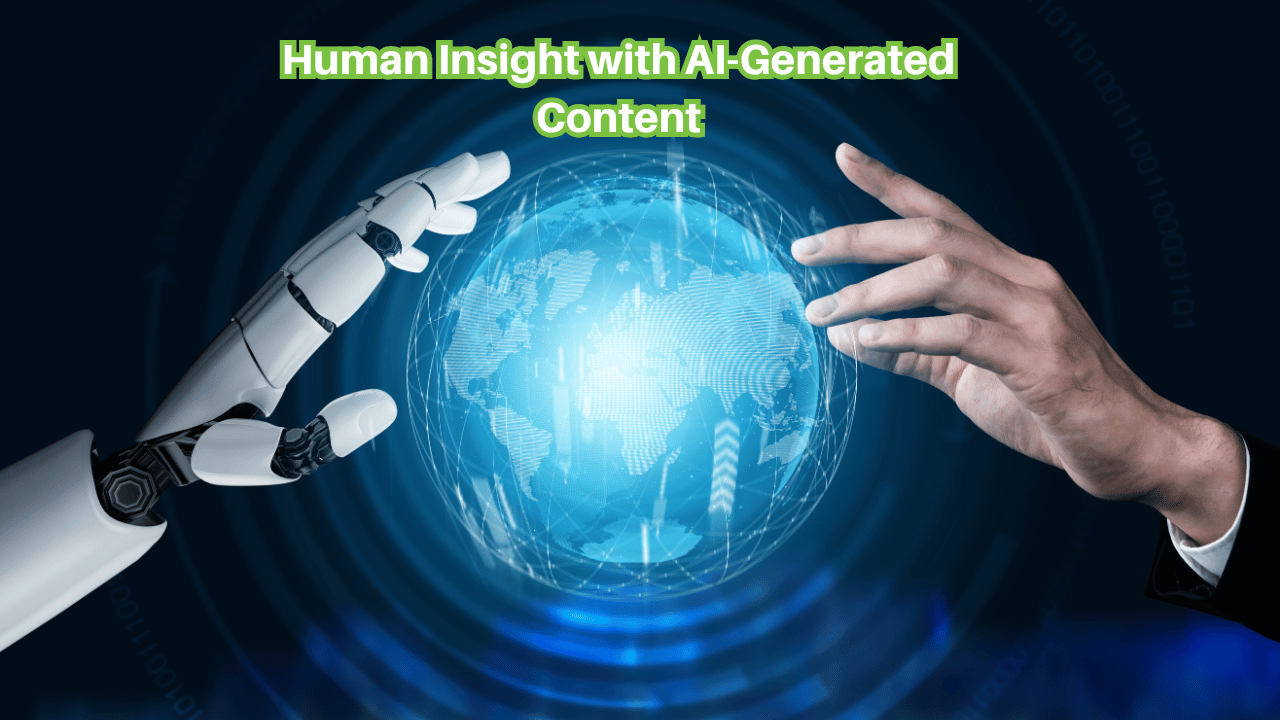In the digital age, AI tools have revolutionized content creation, prompting questions about their credibility. Can AI-generated content meet Google’s E-E-A-T (Experience, Expertise, Authoritativeness, Trustworthiness) standards? The answer is yes, but human insight is crucial. Here’s how to effectively integrate AI with human oversight to maintain these standards.
The Role of Human Insight in AI Content
AI tools like ChatGPT and Claude excel at generating outlines and drafting articles. However, they lack the intent, context, and expertise inherent to humans. AI often oversimplifies topics and can produce factually incorrect content, known as “hallucinations.” Such content risks damaging your credibility and trustworthiness.
Human involvement compensates for these shortcomings. Editors with real knowledge must fact-check AI-generated content, enhance its nuances, and ensure it aligns with current industry practices. This human touch is vital for maintaining the E-E-A-T standards that Google prioritizes.
Risks of Over-Reliance on AI
Over-relying on AI for content creation presents several risks:
- False Authority and Misinformation: AI can generate inaccurate information, which, if published, can tarnish your brand’s trustworthiness and make it challenging to rebuild.
- Outdated Information: AI models don’t update in real-time, leading to potentially outdated content unless closely monitored. This can adversely affect your site’s relevance and authority.
- Content Redundancy: AI draws from existing sources, risking repetitive content that fails to stand out. This makes it difficult for search engines to view your site as authoritative.
- Legal and Compliance Issues: In fields like medical or financial services, incorrect AI-generated content can lead to legal liabilities.
- Trust Breakdown: Audiences recognize generic AI content, which can drive them to competitors offering authentic, expert insights.
Strengthening E-E-A-T with Human Experience
The latest E-E-A-T update emphasizes “Experience,” highlighting the value of content created by individuals with real-life insights. Here’s how to incorporate experience into your content:
- Include Real Stories: Share experiences from your team, clients, or projects. Use real names and results to add credibility.
- Engage Internal Experts: Allow engineers, consultants, and practitioners to contribute directly, enhancing your content’s expertise and relevance.
- Contextualize Your Content: Provide detailed examples, such as specific case studies, to make your content stand out and resonate with audiences.
To ensure Google and your audience trust your content, employ clear authorship with bios linking to real credentials. Use structured data like schema markup to enhance your content’s visibility and credibility. Cite high-quality sources and implement a feedback system to maintain content accuracy and trustworthiness.
Let’s review
Can AI-generated content meet Google’s E-E-A-T standards, and what role does human insight play in this process?
Yes, AI-generated content can meet Google’s E-E-A-T (Experience, Expertise, Authoritativeness, Trustworthiness) standards, but human insight is essential. AI tools excel in generating outlines and drafts; however, they lack the intent and context that humans bring. Human editors must fact-check, enhance nuances, and ensure the content aligns with industry standards. This integration of human oversight maintains credibility and trustworthiness, which are crucial for E-E-A-T compliance.
What are the risks of over-relying on AI for content creation, and how can these be mitigated?
Over-relying on AI poses several risks, including the dissemination of false information, outdated content, redundancy, and potential legal liabilities. AI can generate factually incorrect (“hallucinated”) content, damaging your brand’s trust. To mitigate these risks, human editors should verify accuracy, update content regularly, and ensure unique, engaging content. Involving experts for accuracy and compliance, especially in sensitive fields like medical or financial services, is crucial to maintaining your brand’s authority and trustworthiness.
How can content creators strengthen E-E-A-T by incorporating human experience into their strategy?
To strengthen E-E-A-T with human experience, content creators should focus on incorporating real-life insights. This includes sharing genuine stories from team members or clients, engaging internal experts to contribute specialized knowledge, and contextualizing content with detailed case studies. Additionally, using clear authorship and linking to real credentials enhances credibility. Employing structured data like schema markup and citing high-quality sources further boosts content visibility and trust, ensuring both Google and your audience recognize your authority.
In conclusion, while AI is a powerful tool for streamlining content creation, it cannot replace human experience and insight. By integrating human oversight, your content will not only meet Google’s E-E-A-T standards but also resonate with your audience, establishing your brand as a trusted authority. Use AI to support your efforts, but always ensure the human element is at the forefront of your content strategy.






